Do you have a first aid kit in your car? If not, well here is a very handy car first kit list just for you.
You never know when you might need it, whether it’s for a papercut or a more serious injury.
That’s why it’s super important to have all the essentials on hand. From band-aids to antiseptic wipes, we’ve got you covered with the top 10 must-have items for your car first aid kit.
So sit back, relax, and let us walk you through what you need to keep on deck in case of emergencies on the road.
Lets get started.
Table of Contents
Top 10 Car First Aid Kit List
1
Adhesive Bandages
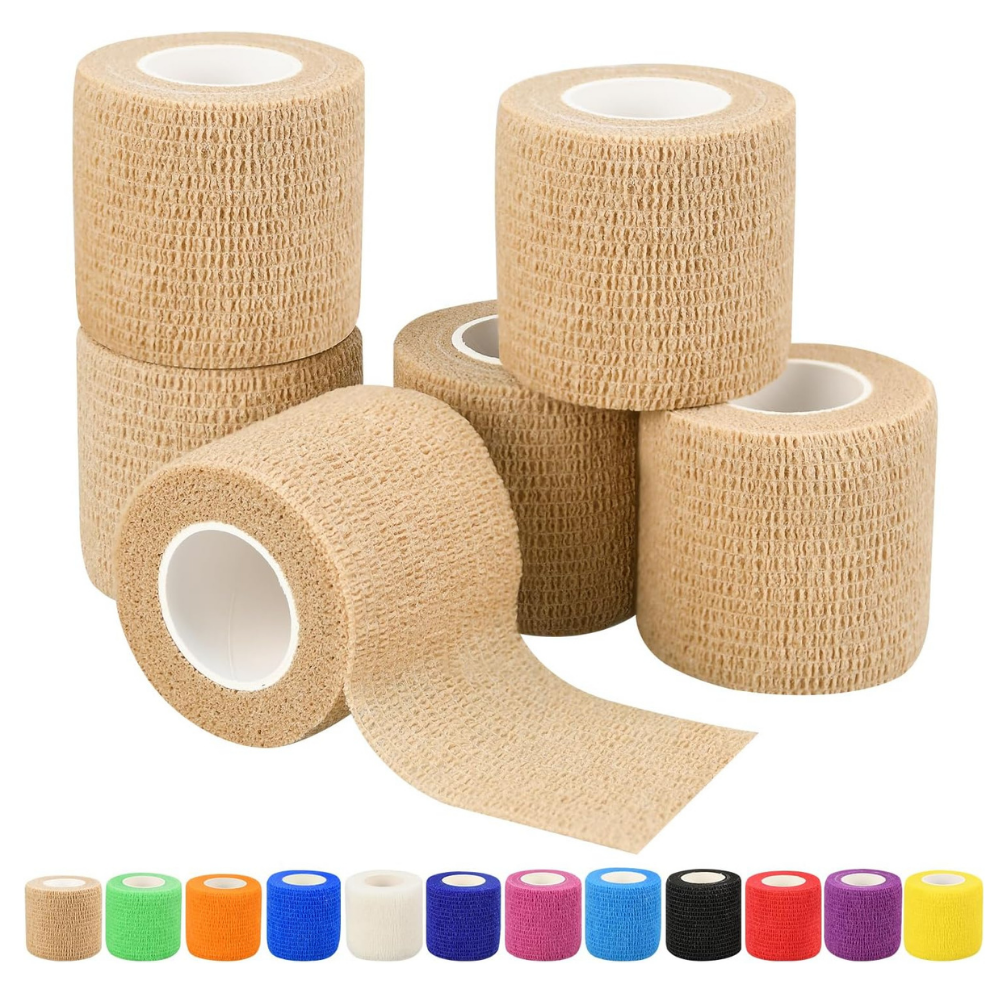
Versatile: Cover various wounds
Protective: Shields cuts and scrapes
Convenient: Easy to apply on-the-go
Justification: Adhesive bandages are essential as they come in different sizes, offering versatility to cover small cuts, scrapes, and blisters, providing protective coverage conveniently.
2
Adhesive Tape
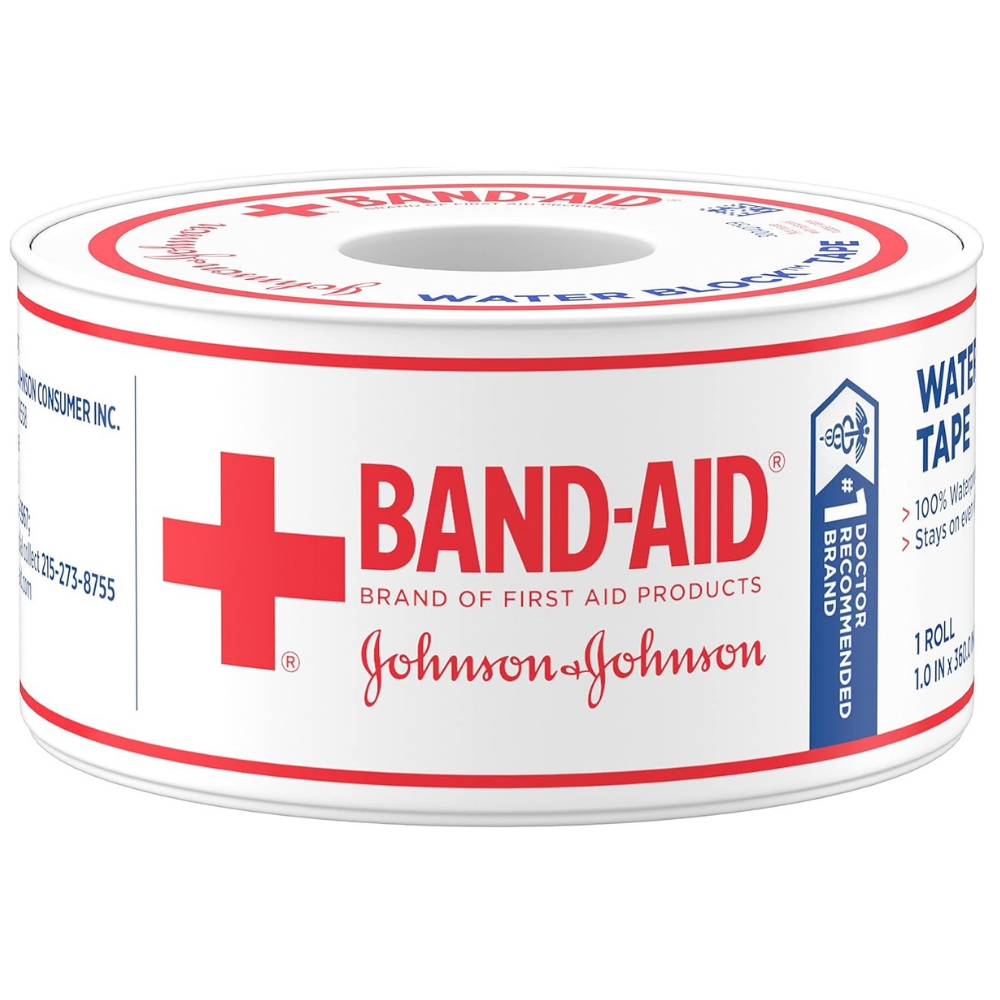
Secure: Holds bandages in place
Reliable: Ensures stability
Versatile: Multiple uses in first aid
Justification: Adhesive tape is crucial as it securely holds gauze pads and bandages in place, providing reliable support and versatility in various first aid applications.
3
Antibacterial Ointment
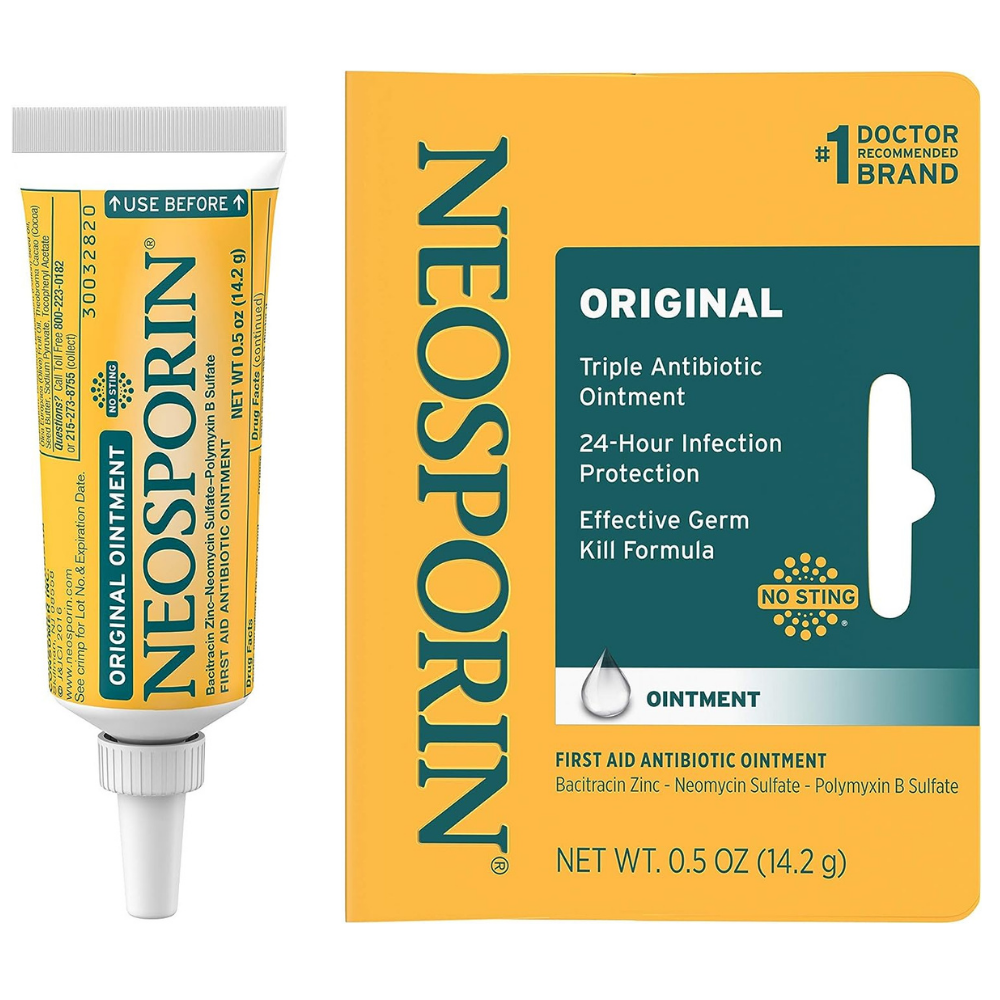
Preventive: Minimizes infection risk
Healing: Promotes wound recovery
Soothing: Provides comfort
Justification: Antibacterial ointment is essential for preventing infection and promoting healing of cuts and scrapes, offering soothing relief and ensuring swift recovery.
4
Tweezers
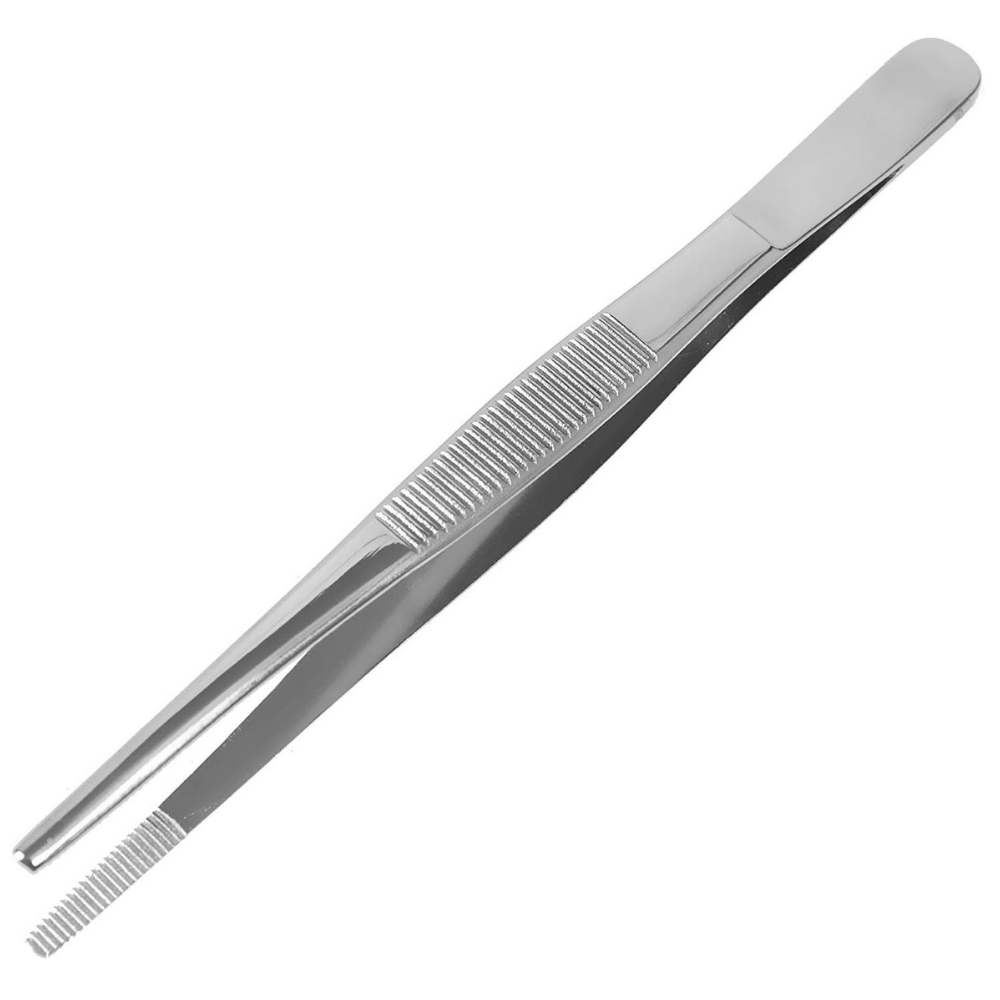
Precise: Accurate debris removal
Handy: Essential for emergencies.
Compact: Fits in first aid kits.
Justification: Tweezers are indispensable for first aid kits, offering precision in removing splinters, ticks, or debris from wounds, and their compact size ensures they are readily available during emergencies.
5
Compression Bandage
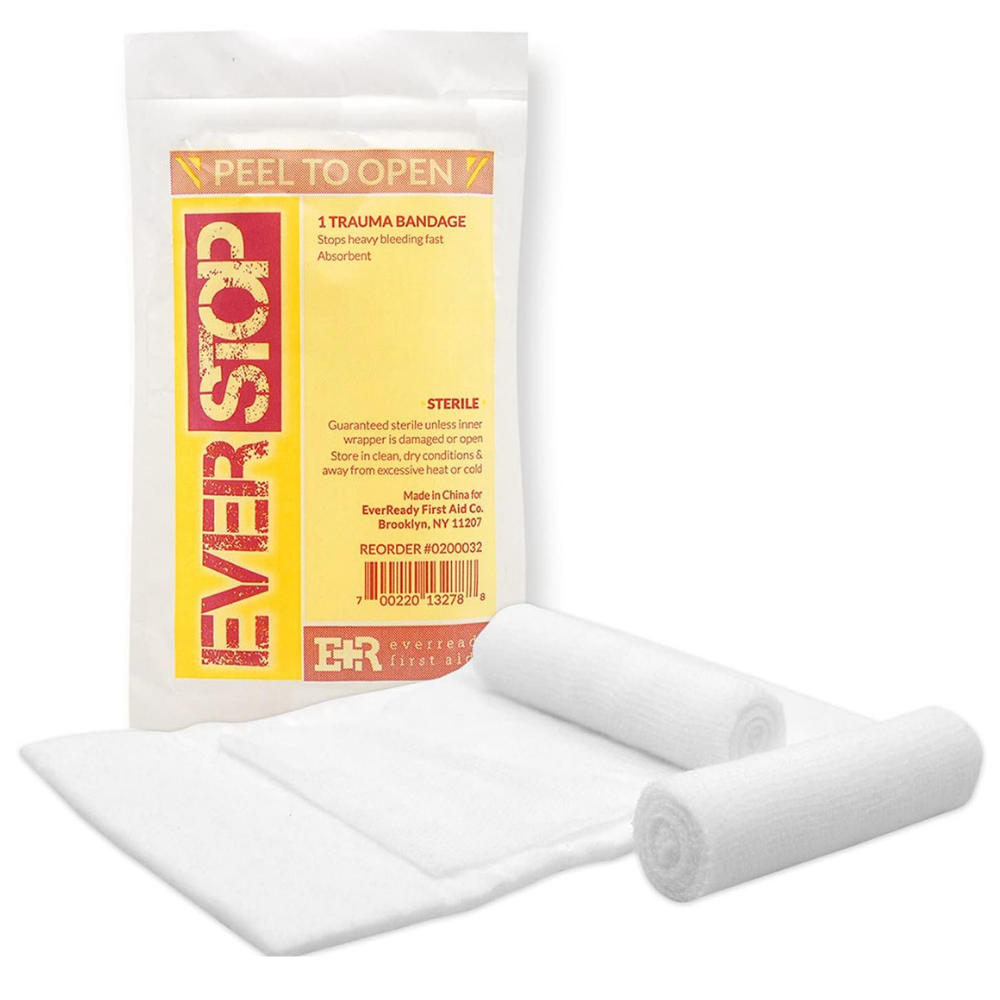
Rapid Bleeding Control
Enhanced Survival Odds
Immediate Pressure Application
Justification: Compression bandages are vital in car accidents, swiftly stemming bleeding by applying pressure to wounds. This immediate action reduces blood loss, enhancing survival chances until further medical help arrives.
6
Sterile Gauze Pads
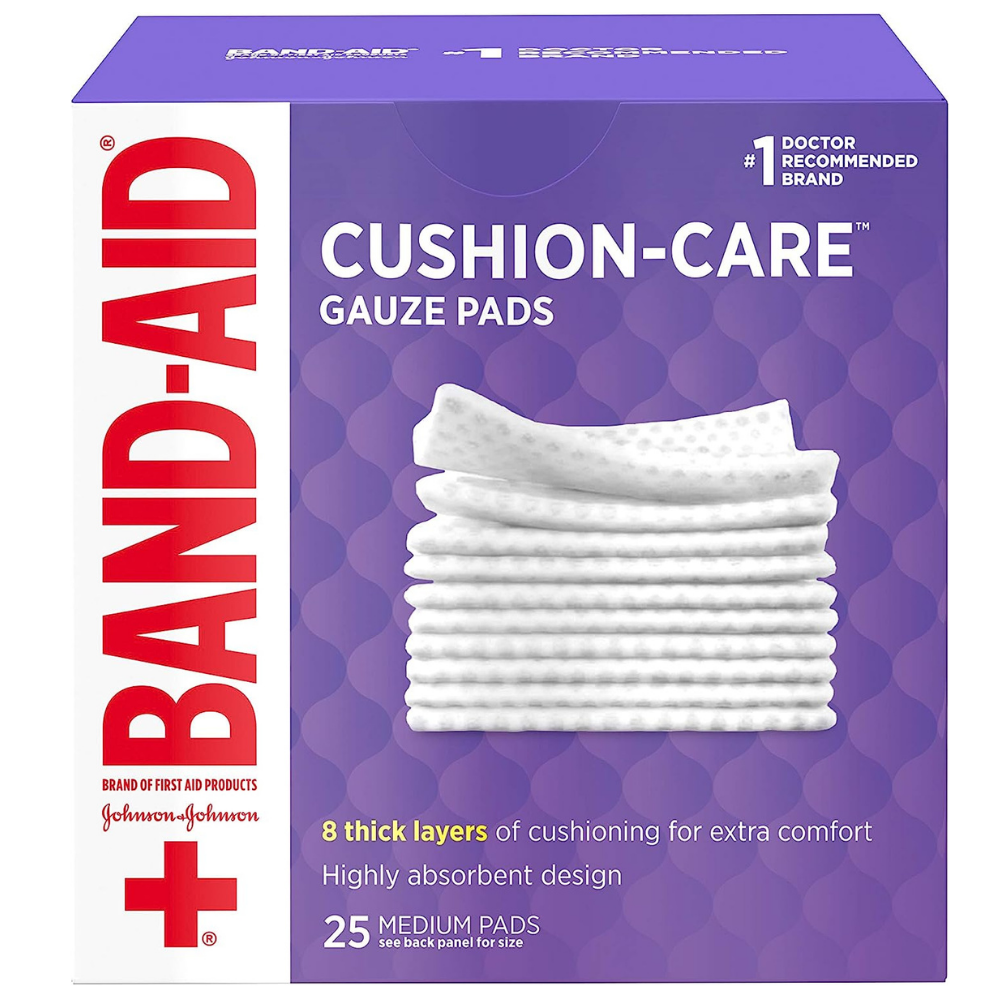
Essential: Aid wound cleaning.
Controlling: Helps control bleeding.
Versatile: Comes in different sizes
Justification: Sterile gauze pads are indispensable for first aid kits, aiding in wound cleaning and controlling bleeding while offering versatility in various wound sizes
7
Antiseptic Wipes
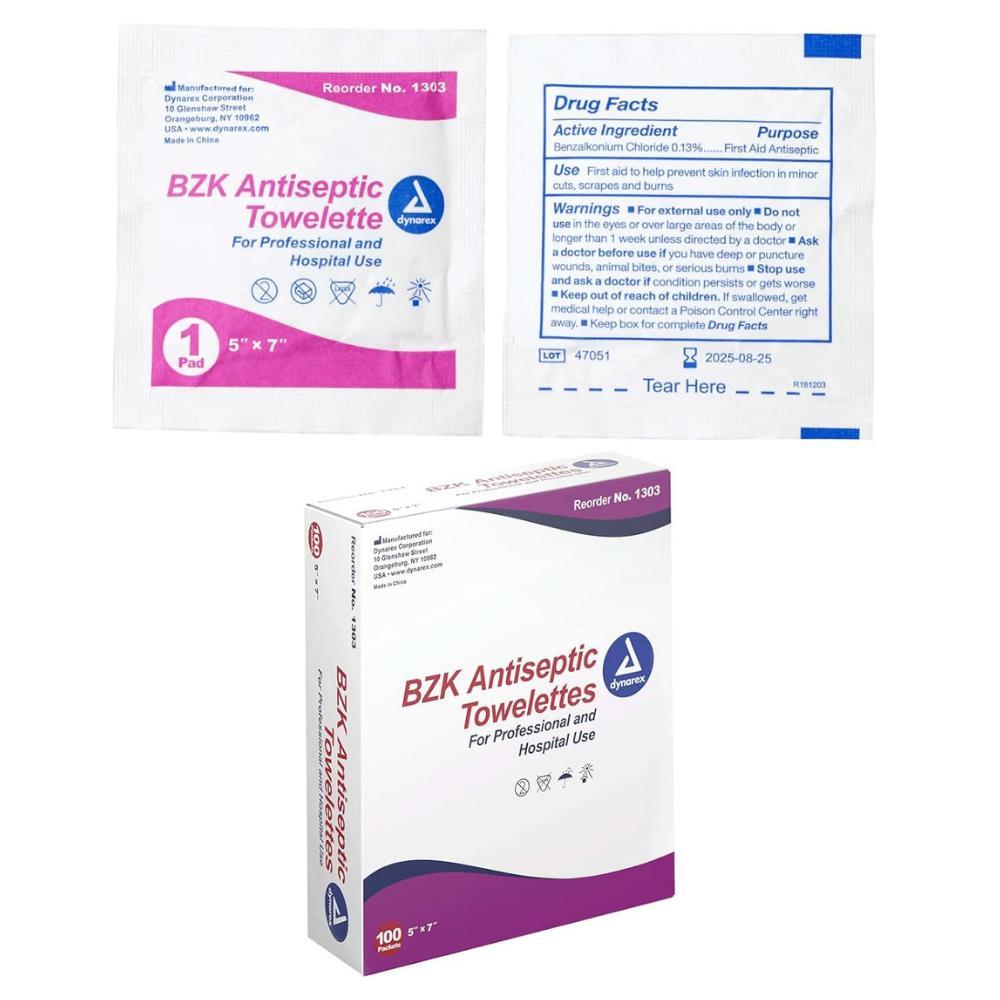
Cleansing: Removes dirt and bacteria
Preventative: Reduces infection risk
Convenient: Ready to use packets
Justification: Antiseptic wipes play a vital role in first aid by effectively cleansing wounds, preventing infection, and offering convenient usage in emergency situations.
8
Disposable Gloves
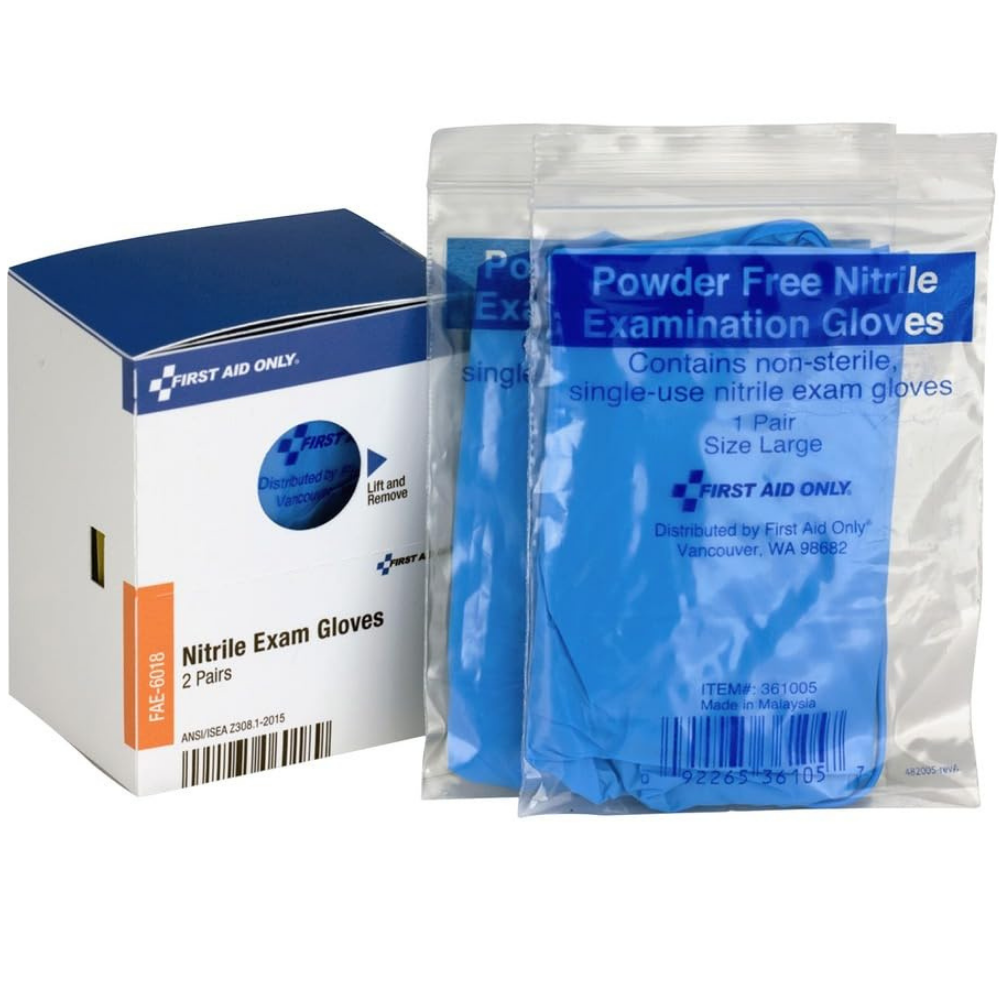
Hygienic: Protects against germs.
Safe: Prevents contamination
Convenient: Easy to use and dispose of
Justification: Disposable gloves are crucial for first aid, providing hygienic protection against bodily fluids and germs, ensuring safety and convenience during administration.
9
Scissors
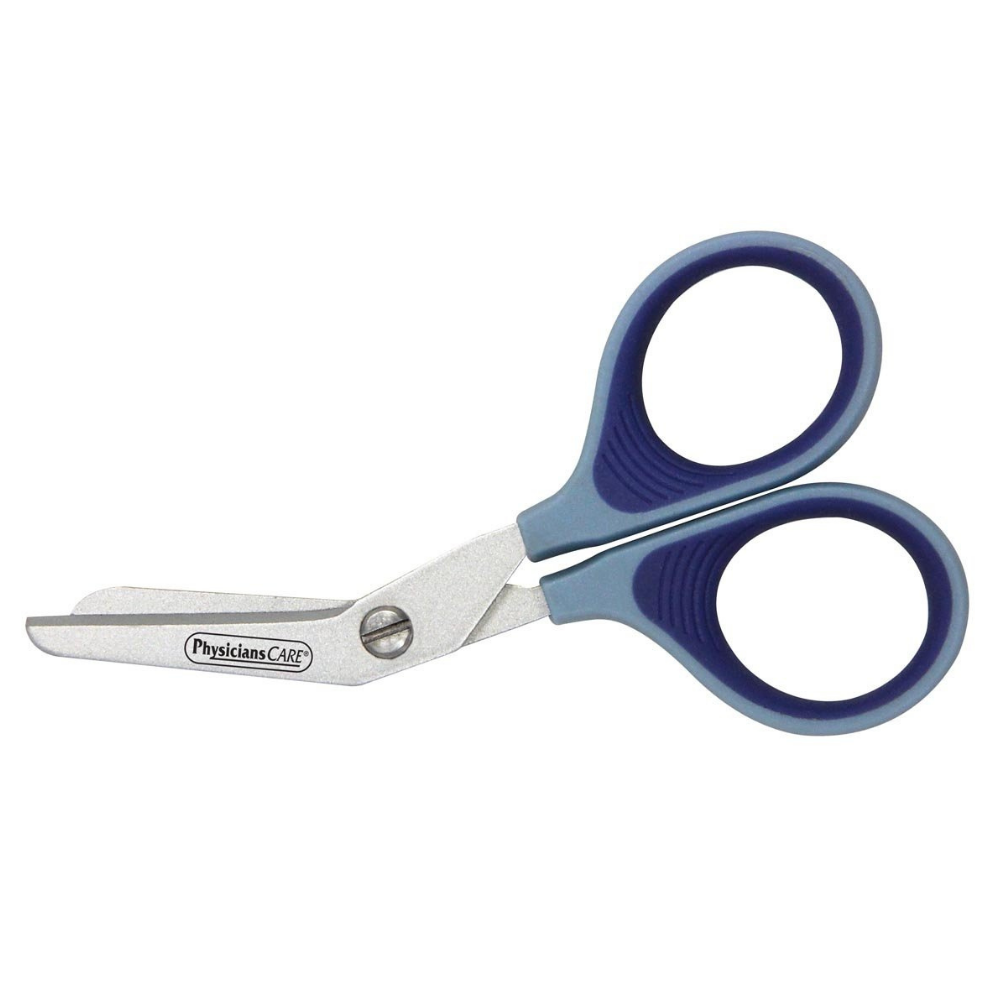
Sharp: Easily cuts materials
Essential: Versatile tool
Reliable: Performs in emergencies.
Justification: Sharp scissors are indispensable in first aid kits, providing versatility for cutting gauze, tape, or clothing, ensuring reliability during emergency situations.
10
Emergency Blanket
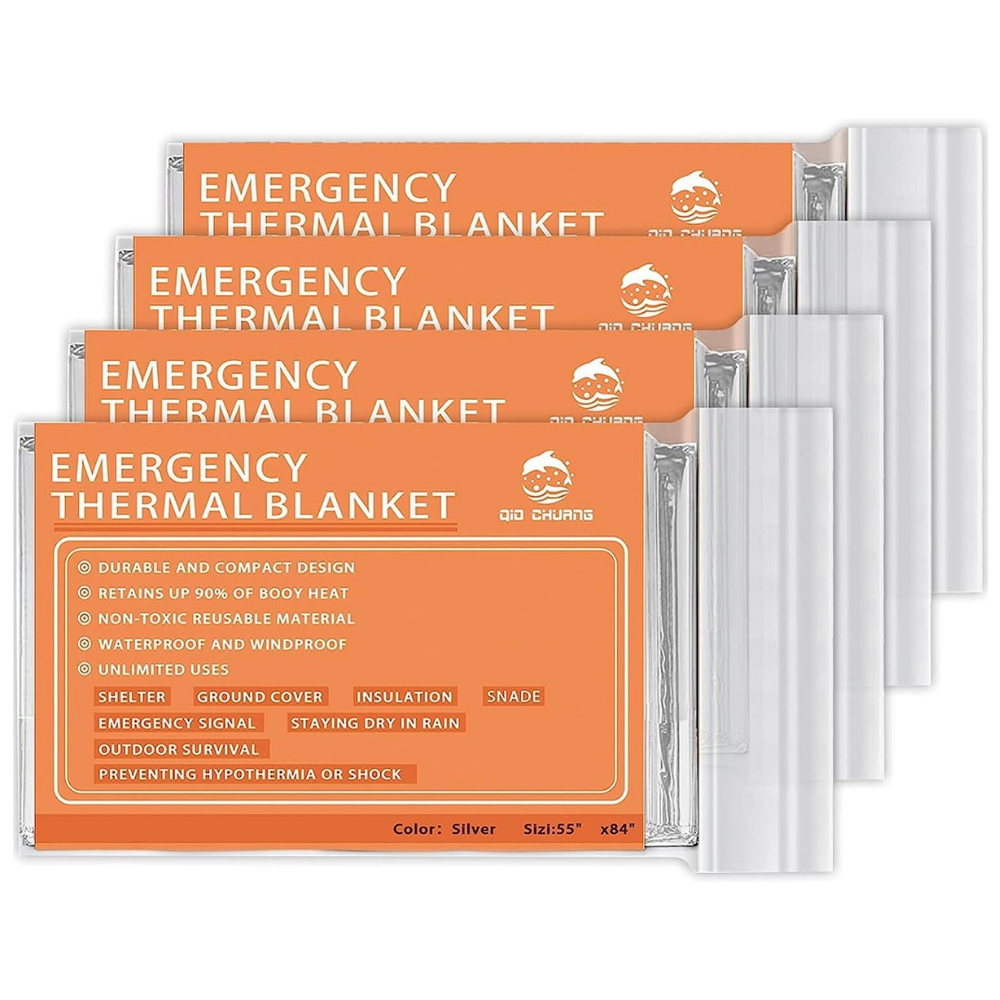
Warmth: Provides insulation
Protective: Shields cuts and scrapes
Compact: Easily stored in vehicles.
Justification: An emergency blanket is essential for providing warmth and protection from the elements during accidents or breakdowns, offering compact and essential assistance in emergencies.
Top 10 Summary
Adhesive Bandages – Versatile for different wounds
Adhesive Tape – Versatile and also Provides stability
Antibacterial Ointment – Preventing infection
Tweezers – Precision for removing debris form wounds
Compression Bandage – Swiftly stemming bleeding
Sterile Gauze Pads – Clean and stem bleeding
Antiseptic Wipes – Effectively cleansing wounds
Disposable Gloves – Hygienic protection
Scissors – Essential for cutting gauge and clothes
Emergency Blanket – Warmth and protection from elements
Selection Criteria
While compiling this car first aid kit list I have have reviewed many official government sources for what is required in our list as well as what the most common accidents are. To save you time and effort, all these products have been chosen from Amazon for easy purchasing and speedy delivery options. Where possible I have chosen products which have a high volume of reviews rated 4 and above, proven product with significant amount purchased and trusted brands. I have also tried to find the smaller quantity version of a product given this is going into a first aid kit where you may only need one or two items supplied.
Why Do You Need a Car First Aid Kit?
Having a car first aid kit list is essential for ensuring your safety and preparedness in case of emergencies while on the road.
Emergencies can happen anytime, anywhere, and having the right supplies readily available can make a significant difference in the outcome of a situation.
Whether it’s a minor injury or a more serious accident, having a well-equipped first aid kit in your car can provide immediate assistance until further help arrives.
Common injuries on the road can include cuts, scrapes, burns, or even more severe injuries requiring immediate attention.
Having a car first aid kit with the necessary supplies can help you address these injuries promptly, minimizing risks and preventing complications.
To meet legal requirements and ensure compliance, having a car emergency kit, including a first aid kit, is mandatory in many jurisdictions.
Keeping your kit up to date and fully stocked with essential items is not only a safety precaution but also a legal obligation.
Importance of Being Prepared for Emergencies
Being prepared for emergencies is crucial, especially when you are traveling by car. In the event of an accident or any other medical emergency on the road, having a well-stocked first aid kit can be a lifesaver.
It allows you to provide immediate care until professional help arrives, potentially reducing the severity of injuries.
Properly equipped car first aid kits can help address a wide range of injuries, from minor cuts and bruises to more serious conditions.
By being prepared and having essential supplies on hand, you can respond effectively to different medical situations that may arise while driving.
Moreover, being prepared for emergencies can also help you stay calm and composed during challenging situations.
Knowing that you have the necessary tools and supplies in your car first aid kit can give you peace of mind and confidence in handling unexpected incidents.
Common Injuries on the Road
When traveling by car, you may encounter various types of injuries that require immediate attention.
Common road injuries include cuts, scrapes, burns, sprains, and fractures, among others.
Having a car first aid kit with essential supplies can help you address these injuries promptly and effectively.
Injuries such as cuts and abrasions can easily occur, especially during outdoor activities or road trips.
With the right first aid supplies in your car kit, you can clean and dress wounds quickly to prevent infection and promote healing. Additionally, having items like bandages, gauze, and antiseptic wipes can aid in proper wound care.
While some injuries may be minor and easily treatable, others can be more severe and require immediate medical attention.
Having a well-equipped car first aid kit can provide vital support in managing different types of injuries until professional help is available.
What Should Be Included in a Car First Aid Kit?
When assembling a car first aid kit list, it is essential to include a range of essential first aid supplies to address a variety of injuries and emergencies that may occur on the road.
Having the right items in your kit can make a difference in effectively managing medical situations and providing necessary care.
Basic first aid items every kit should have include adhesive bandages, gauze pads, antiseptic wipes, scissors, tweezers, adhesive tape, and disposable gloves.
These items are essential for cleaning and dressing wounds, as well as providing protection against infections.
Checking the expiration dates of first aid supplies regularly is crucial to ensure that the contents of your kit remain safe and effective.
Expired supplies should be promptly replaced with new items to maintain the readiness and reliability of your car first aid kit.
Essential First Aid Supplies
Essential first aid supplies for your car kit should include items such as adhesive bandages, sterile gauze pads, antiseptic wipes, adhesive tape, scissors, tweezers, and disposable gloves.
These supplies are fundamental for managing various injuries, from minor cuts to more serious wounds.
Having a supply of adhesive bandages in different sizes can help cover and protect minor cuts and scrapes, while sterile gauze pads are useful for applying pressure to control bleeding.
Antiseptic wipes and adhesive tape are crucial for cleaning and securing wounds, preventing infections, and promoting proper healing.
Scissors and tweezers are handy tools for cutting bandages, removing splinters, or foreign objects from wounds.
Disposable gloves should be included to protect both the caregiver and the injured person from potential contamination during first aid administration.
Basic First Aid Items Every Kit Should Have
Basic first aid items that every car kit should have include adhesive bandages, gauze pads, antiseptic wipes, adhesive tape, scissors, tweezers, disposable gloves, and a CPR mask.
These essential items are vital for providing immediate care for a variety of injuries and medical emergencies.
Adhesive bandages are helpful for covering small cuts and scrapes, while gauze pads and adhesive tape are essential for dressing larger wounds.
Antiseptic wipes can be used to clean the affected area before applying bandages to prevent infections.
Additionally, having scissors and tweezers in your kit allows you to cut bandages to size and remove small debris from wounds.
Disposable gloves are essential for maintaining hygiene while administering first aid, and a CPR mask is crucial for performing cardiopulmonary resuscitation in emergencies.
Checking Expiration Dates of First Aid Supplies
Regularly checking the expiration dates of first aid supplies in your car kit is crucial for ensuring the effectiveness and reliability of the contents.
Expired supplies may not function as intended and can compromise the quality of care provided in emergencies.
Expired items such as antiseptic wipes, adhesive bandages, and medications may lose their potency over time, rendering them ineffective for treating injuries.
Checking expiration dates allows you to replace expired supplies promptly and maintain a well-stocked and functional first aid kit at all times.
By monitoring and updating the contents of your car first aid kit regularly, you ensure that the supplies are safe to use and can effectively address medical situations when needed.
Maintaining up-to-date items in your kit is essential for your preparedness and response to emergencies.
How to Build a Well-Stocked Car First Aid Kit?
Building a well-stocked car first aid kit involves selecting the right containers to organize and store your supplies effectively.
The choice of containers can impact the accessibility and organization of your kit, making it easier to locate and use specific items during emergencies.
When building your car first aid kit, consider using durable, waterproof containers that can withstand travel conditions and protect the contents from moisture or damage.
Compact, multi-compartment containers with clear lids can help you easily identify and access supplies when needed.
In addition to essential first aid supplies, consider adding extra safety and emergency items to your car kit, such as a flashlight, emergency blanket, whistle, multitool, and a portable phone charger.
These additional items can enhance your preparedness for various situations and provide extra support during emergencies.
Choosing the Right Containers for Your Kit
Choosing the right containers for your car first aid kit is essential to ensure the organization and protection of your supplies.
Durable, waterproof containers with secure closures are ideal for safeguarding the contents from damage and environmental factors.
Opt for compact containers with multiple compartments or dividers to keep different items organized and easily accessible.
Clear lids or transparent containers allow you to quickly identify the contents of your kit and locate specific supplies during emergencies.
Select containers that are easy to carry and fit securely in your vehicle, ensuring that your kit is readily available when needed.
Properly organizing and storing your first aid supplies in suitable containers can contribute to the effectiveness and usability of your car kit in emergency situations.
Adding Extra Safety and Emergency Items
In addition to essential first aid supplies, incorporating extra safety and emergency items into your car kit can enhance your preparedness for unforeseen situations.
Items such as a flashlight, emergency blanket, whistle, multitool, and portable phone charger can be invaluable during emergencies.
A flashlight is essential for providing illumination in dark or low-light conditions, aiding in search and rescue efforts or examining injuries.
An emergency blanket can help retain body heat and protect against hypothermia in case of exposure to cold weather.
Other useful items include a whistle for signaling for help, a multitool for various tasks, and a portable phone charger to ensure you can communicate during emergencies.
These additional safety items complement your first aid supplies and increase your readiness for different emergency scenarios.
Including First Aid Guide and Emergency Phone Numbers
Assembling a well-stocked car first aid kit should also involve including a first aid guide and a list of emergency phone numbers for quick reference.
A first aid guide provides essential instructions on administering basic first aid techniques and procedures in different situations.
Emergency phone numbers, including contacts for medical services, roadside assistance, and emergency services, should be readily accessible in your kit.
Having this information readily available can expedite your response to emergencies and ensure timely assistance when needed.
Consider laminating the first aid guide and emergency contact list to protect them from moisture or damage.
Keeping these informational resources in your car first aid kit enhances your preparedness and enables you to respond effectively to medical emergencies on the road.
Where to Keep Your Car Emergency Kit?
Deciding on the best location to store your car emergency kit is crucial to ensure accessibility and readiness in case of an emergency.
The placement of your kit within the vehicle can impact how quickly you can retrieve it and use the supplies during unexpected situations.
Best locations to store your kit in the vehicle include the glove compartment, center console, or under the driver’s seat for easy access.
Placing your kit in a designated spot that is secure but within reach can help you retrieve it quickly when needed.
Ensuring the accessibility of your car emergency kit is essential during emergencies when time is of the essence.
Make sure all passengers in the vehicle are aware of the kit’s location and how to use its contents in case of an emergency.
Best Locations to Store Your Kit in the Vehicle
Choosing the best location to store your car emergency kit depends on accessibility and convenience during emergencies.
Ideal storage spots include the glove compartment, center console, or a secure compartment within reach of the driver or passengers.
Storing your kit in the glove compartment provides quick access in case of minor injuries or roadside emergencies.
The center console is another convenient location that allows easy retrieval of the kit without obstructing driving or passenger comfort.
Ensure that the chosen storage location is easily accessible to all occupants of the vehicle and is not obstructed by other items or belongings.
Keeping your car emergency kit within reach and in a designated spot ensures that you can respond promptly to medical situations and emergencies on the road.
Ensuring Accessibility in Case of an Emergency
Ensuring the accessibility of your car emergency kit is vital for quick response and effective use of supplies during unexpected situations.
In case of an emergency, easy access to your kit can make a significant difference in administering timely first aid and support to those in need.
Make sure your car kit is stored in a location that is easily reachable by the driver or passengers without causing interference.
Avoid placing the kit in the trunk or other areas that may be challenging to access during emergencies when every second counts.
Educate all passengers in your vehicle about the location of the emergency kit and its contents.
Regularly check the accessibility of the kit and ensure that it remains within arm’s reach and ready to use in case of roadside emergencies or medical situations.
What Are the Top Life-Saving Items for Your Car First Aid Kit?
When assembling your car first aid kit, including top life-saving items can help you respond effectively to emergencies and potentially save lives.
Essential supplies such as bandages, dressings, gauze, emergency blanket, CPR mask, tweezers, antibiotic ointment, wipes, and antiseptic solutions are crucial for providing immediate care in critical situations.
Bandages, dressings, and gauze are essential for wound care and controlling bleeding from injuries.
An emergency blanket can help retain body heat in case of exposure to cold weather or shock. CPR masks and tweezers are vital tools for performing cardiopulmonary resuscitation and removing foreign objects from wounds.
In addition, including antibiotic ointment, wipes, and antiseptic solutions in your car kit can help prevent infections and promote proper wound healing.
These life-saving items are indispensable components of a well-prepared and fully equipped car first aid kit.
Bandages, Dressings, and Gauze for Wound Care
Bandages, dressings, and gauze are essential items for wound care and controlling bleeding in case of injuries.
Including different sizes of adhesive bandages and sterile gauze pads in your car kit allows you to dress and protect wounds effectively, promoting healing and preventing infections.
In the event of cuts, scrapes, or other injuries that break the skin, applying bandages and gauze can help control bleeding and keep the wound clean.
Dressings are crucial for covering and protecting wounds until further medical help is available, reducing the risk of complications and ensuring proper healing.
Having an assortment of bandages, dressings, and gauze pads in your car first aid kit ensures you are prepared to manage various types of wounds and injuries that may occur while traveling.
These items are essential for providing immediate care and minimizing the impact of injuries on your health.
Emergency Blanket, CPR Mask, and Tweezers
An emergency blanket, CPR mask, and tweezers are indispensable life-saving items to include in your car first aid kit for emergencies.
An emergency blanket provides warmth and protection from the elements in case of exposure to cold weather or shock, aiding in the stabilization of the injured person.
A CPR mask is essential for performing cardiopulmonary resuscitation (CPR) in emergencies where a person’s breathing or heartbeat has stopped.
Having a CPR mask in your car kit allows you to provide vital resuscitation assistance safely and effectively to those in need of immediate medical intervention.
Tweezers are valuable tools for removing splinters, debris, or foreign objects from wounds, reducing the risk of infection and further injury.
Including tweezers in your car first aid kit enables you to address minor wounds and injuries promptly, enhancing the overall care you can provide in emergency situations.
Antibiotic Ointment, Wipes, and Antiseptic Solutions
When it comes to first-aid kits, it is important to be prepared for any situation. Including items such as antibiotic ointment, wipes, and antiseptic solutions can help you stay safe and handle medical needs effectively.
These items can help prevent infections and keep wounds clean. Whether you are at home, on the go, or on your next road trip, having a basic first aid kit with these essentials can make a big difference.
You never know when an accident might happen, so it’s important to carry a first aid kit in your vehicle.
In addition to emergency supplies like bandages and medical tape, having antibiotic ointment and wipes in your kit can help you be prepared for anything.
Conclusion
I really hope this article has been of help. My overall aim of this website is to whole heartedly help people so they stay safe on the roads and are in best situation should there be an incident.
being prepared is key when on the road, dash cams are also important, why not also checkout our article on dash cams so you can also make sure you have any incident recorded.
If you have any questions. please feel free to leave a comment or you can contact me directly via the contact us page.
FAQ
What should I include in my car first aid kit checklist?
Some essential items to include in your car first aid kit checklist are band-aids, gauze pads, adhesive tape, antiseptic wipes, scissors, tweezers, pain relievers, and gloves.
Why is having a roadside emergency kit important?
A roadside emergency kit can be crucial during unexpected situations on the road, providing you with necessary supplies to handle minor accidents or injuries until help arrives.
What are the must-have items in a basic car first aid kit?
A basic car first aid kit should include items like band-aids, gauze pads, adhesive tape, antiseptic wipes, scissors, gloves, and pain relievers to address common injuries or accidents.
Should I keep a flashlight in my car first aid kit?
Yes, it is recommended to keep a flashlight in your car first aid kit, as it can be useful during emergencies in low-light conditions or at night.
What additional items should I consider adding to my car first aid kit checklist?
Some additional items to consider including in your car first aid kit checklist are a charger for your phone, emergency blanket, whistle, and multi-tool for extra preparedness.
How can I prepare for an emergency on the road with my car first aid kit?
To prepare for an emergency on the road, regularly check and replenish your car first aid kit, familiarize yourself with its contents, and ensure it is easily accessible in your vehicle.
Is it important to have jumper cables in your car first aid kit?
Yes, having jumper cables in your car first aid kit is a good idea as they can help you jump-start your car in case of a dead battery, providing you with a quick solution on the go.
Why should I include road flares in my car first aid kit?
Including road flares in your car first aid kit can help alert other drivers of your presence during roadside emergencies, enhancing safety by making your vehicle more visible.

